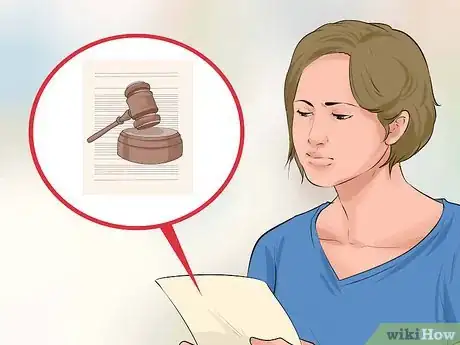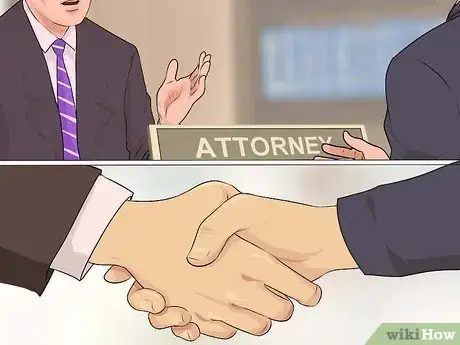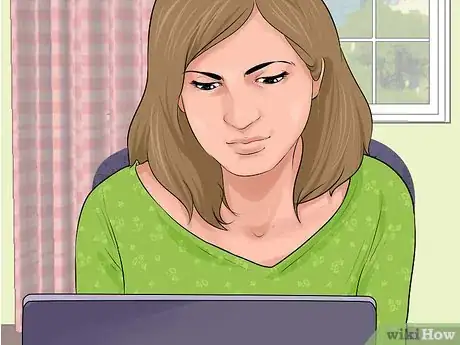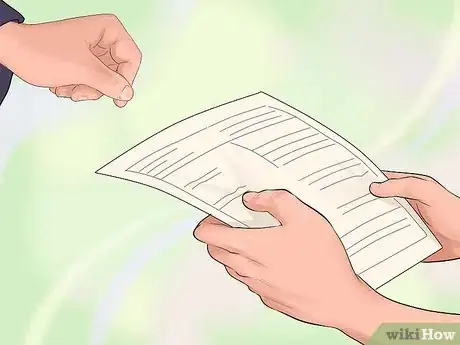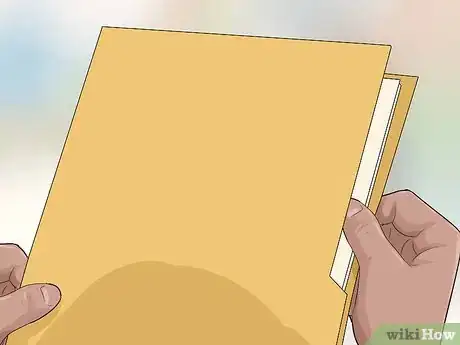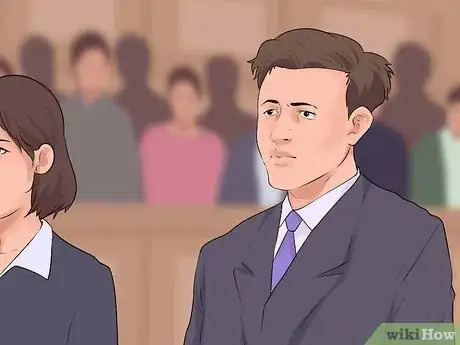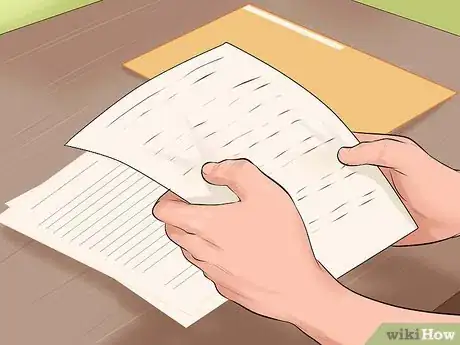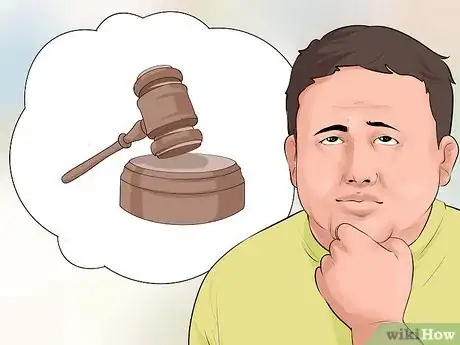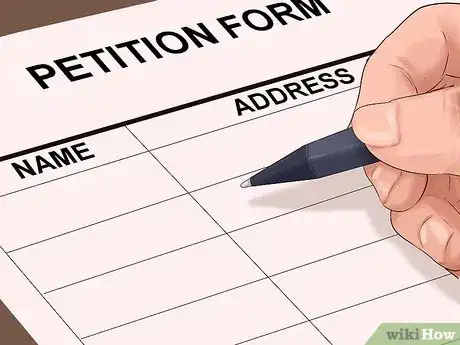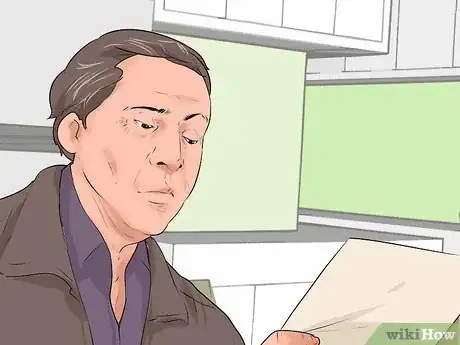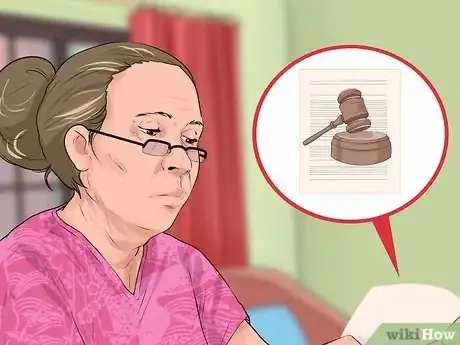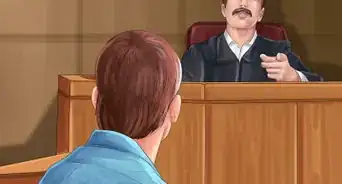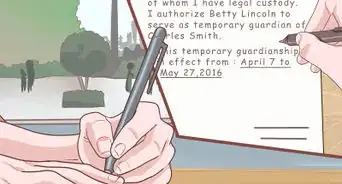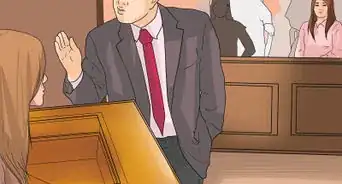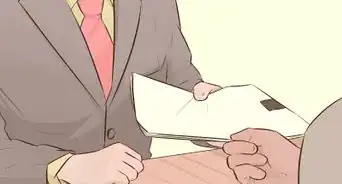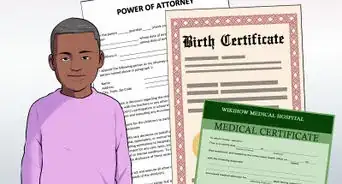This article was co-authored by Clinton M. Sandvick, JD, PhD. Clinton M. Sandvick worked as a civil litigator in California for over 7 years. He received his JD from the University of Wisconsin-Madison in 1998 and his PhD in American History from the University of Oregon in 2013.
There are 9 references cited in this article, which can be found at the bottom of the page.
This article has been viewed 78,733 times.
Guardianship of minor children and incapacitated adults is a court ordered legal relationship whereby a guardian has the responsibility to care for the physical and/or financial well-being of the ward. While there are some automatic reasons why a guardianship may terminate, such as a minor turning 18, often a guardianship must be terminated by a court order. In order to terminate a guardianship, a person will have to file a petition with the court, attend a court hearing, present evidence, and wait for a judge’s ruling.
Steps
Providing Legal Justification for Termination of Guardianship
-
1Demonstrate automatic termination of guardianship. One of the simplest ways to terminate a guardianship of a child is to show that they meet one of the requirements for automatic termination of guardianship. While each state has its own laws regarding termination of guardianship, generally guardianship will terminate automatically for one of the following reasons:
- Death of the ward. While the guardian may be legally required to provide a final accounting of the ward’s finances at a court hearing, the guardian’s obligations terminate with the death of the ward (the child for whom the guardian was responsible).
- The ward turns 18. Once a ward turns 18 and is considered an adult, a guardianship will be terminated.
- The ward is adopted, marries or enters the military service. In most states, any one of these circumstances is grounds for termination of the guardianship.
- The court emancipates the ward. If the child applies for emancipation, which means he or she petitions the court to be ruled an adult, and the court grants the petition, a guardianship will be terminated.[1]
-
2Request by parents for termination. Parents of a minor under guardianship can seek termination of the guardianship if they want the child to live with them again. Generally, in order for a parent to successfully terminate a guardianship in court, they must show:
- That they can provide the child with a stable place to live.
- That they have a source of income that can provide support for the child.
- That they are “fit” to resume care-giving responsibility for the child. Fitness may mean that they have successfully completed rehabilitation.
- That they can provide a good home for the child.[2]
- If the guardianship is contested, the parent may have to provide evidence that the guardian is unfit to perform his or her obligations. This may include evidence that the guardian: misused the child’s funds; was abusive; or can no longer act as a guardian because of substance abuse or incapacitation.[3]
Advertisement -
3Resign as guardian. A guardian can also request to terminate a guardianship by resigning as guardian. Generally, a guardian must petition the court before resigning. The court may terminate the guardianship, appoint another guardian, or, if no replacement is available, the child may be placed in foster care or become a dependent in juvenile court.[4] In order to show the court that the resignation is in the best interest of the child, a guardian may argue the following:
- One or both of the parents are able to resume their parental responsibilities.
- The guardian can no longer serve because of age, illness or infirmity.
- There was an increase in the burden of the guardianship that should have been discussed or planned for during the original appointment.
- The guardian and the minor disagree with respect to the care of the minor and the conflict is detrimental to the minor.
- The resignation will permit financial gain for the minor.
- The resignation will not disadvantage the minor.[5]
-
4Request for termination by ward. In some states like California, a child 12 years old or older may also petition the court for termination of a guardianship. They will have to present evidence that shows that guardianship is not in his or her best interest.[6] A minor may seek termination of a guardianship for the following reasons:
- The minor’s biological parents can resume their parental responsibilities.
- The minor was adopted.[7]
- The guardian has not made him or herself accessible to the minor.
- The guardian is no longer qualified to act in the minor’s best interest because of age or infirmity.
- The guardian misused the minor’s property or funds for something other than care of the minor.[8]
Petitioning the Court for Termination of Guardianship
-
1Hire an attorney. If you believe that the termination of guardianship is going to be contested, it may be in your best interest to hire an experienced family law attorney. A family law attorney can:
- Help you assess the strengths and weaknesses in your case.
- Gather evidence to strengthen your arguments.
- Write and argue persuasively for the termination of guardianship.
- Know the proper forms and documents to file with the court.
-
2Seek court termination of guardianship. In most cases, a guardianship does not terminate unless a court approves the termination, even in the case of a guardian attempting to resign. Therefore, those seeking termination of a guardianship must seek court assistance from the probate or family court where the minor child lives.[9]
- In order to determine what court has jurisdiction over the guardian case, conduct an internet search for the name of the county and state where the child resides and “termination of guardianship.” This should direct you to the appropriate court that hears termination of guardianship cases.
-
3File a Petition to terminate the guardianship. Each county has its own rules for filing a Petition to Terminate Guardianship. As mentioned above, you can locate the appropriate court with an internet search. Often, these courts will also have form petitions for you to use. Generally, a Petition for Termination of Guardianship will include the following information:
- The name of the court where the petition is being filed.
- The name and contact information for the petitioner (the person filing the petition) and their relationship to the child.
- The reasons the petitioner is requesting termination.
- The names and contact information for any person who should be notified of the petition and hearing, including the minor, and the minor’s parents.
- Whether the petition is related to an estate or guardianship of a person.
- Whether there is consent among the interested parties that termination should occur.[10]
- The petition must be filed in the appropriate court, usually in person. You should check with the court to see whether there are any fees associated with the filing.
-
4Provide appropriate documentation. As part of your petition or during the court hearing, you may be asked to provide evidence to support your request for termination. Depending on why you are seeking termination, this evidence may include:
- A guardian’s final accounting of the ward’s estate to the court. You may need to provide this if the ward died, if you are a guardian of property and the ward’s assets are used up, or if you are a guardian seeking to resign your position.
- Parents who want their children to live with them may need to submit a financial disclosure form to show that they are financially stable. A disclosure form may include information such as: current and previous employment information; yearly and monthly income; sources of income; a detailed list of expenses; the number of children living in the home; and an accounting of all personal assets and debts.[11]
- Parents may also present evidence of drug or alcohol rehabilitation.[12]
- To see a sample disclosure form visit: http://www.familylawselfhelpcenter.org/images/forms/misc/financial-disclosure-form-pdf-fillable.pdf.
- You must serve the petition on all interested parties and provide a certificate of service to the court showing that you mailed or served the petition in accordance with local court rules.[13]
-
5Attend court hearing. After your petition is filed, the court will notify you of the date of the hearing to determine whether guardianship should be terminated.
- The person who filed the petition must present evidence that supports termination for guardianship.
- In a petition by parents, a court will want them to show that they can provide a stable place to live and a good home, that they have a source of income, that they are fit to be caregivers and that the child has an emotional bond with the parents.
- If a child is 12 years old or older, the court will take into account where the child wants to live.
- The judge will make his or her decision based on what he or she believes is in the best interest of the child.
- If the court grant’s the petition, the judge will issue an Order Terminating Guardianship.[14]
-
6Appeal the court’s decision. In most states, you have the right to appeal a family law court’s decision. You must check with the court clerk to determine how long you have to file the petition, any fees that are required and the format of the petition. You will also have to show one of the following:
- The court failed to make adequate findings of fact;
- The court did not follow the law properly;
- The court abused its discretion.
Terminating Adult Guardianship
-
1Seek restoration of rights. In the case of an adult, guardianships are meant to protect incapacitated adults’ interests. Guardians have control over the person’s financial assets and have the power to make medical decision for the person. If a previously incapacitated adult regains capacity, the adult may seek a restoration of his or her rights. While state laws regarding guardianship differ, a person seeking restoration of his or her rights may have the following rights afforded to him or her during the process of restoration:
- The right to legal notice of any hearings regarding the guardianship.
- The right to attend hearings.
- The right to an attorney or guardian ad litem, a guardian assigned to ensure that the ward’s rights are protected during the hearing.
- The right to examine witnesses.
- The right to appeal.
-
2Request an attorney. If the guardian is contesting the restoration of rights, it is in the best interest of the person seeking restoration to request that the court appoint an attorney to represent his or her interests during the hearing. Courts should appoint an attorney or another guardian to ensure that the ward’s rights are being protected.
-
3File Petition for Restoration. Every state has its own laws regarding guardianship that also address the restoration of rights and most state’s will have sample petition forms. Generally, a Petition for Restoration will include the following information:
- The name and contact information of the person filing the petition, either the ward or someone on behalf of the ward.
- A sworn affidavit by a medical professional, possibly a psychiatrist, that the ward was examined and that the ward is no longer in need of guardian. The doctor will have to present evidence to support this claim.
- The petition may also include a notice that must be sent to all relevant parties including the current guardian and a certificate of service, which is a document where the petitioner shows that the petition was properly sent to all relevant parties.
- To view a list of state-specific guardian laws that address restoration of rights visit: http://www.americanbar.org/content/dam/aba/administrative/law_aging/2013_CassidyRestorationofRightsChart7-13.authcheckdam.pdf.
- To locate the petition forms, conduct an internet search for the county and state where the ward resides and “restoration of rights” and “adult.” This should direct you to the appropriate county court. You can also call the county court where the ward resides and request the petition form.
-
4Attend hearing. If the court finds that there is sufficient evidence in the petition to support that the ward should have his or her rights restored, the court will hold a hearing on the matter. In order to restore a person’s rights and terminate guardianship, the ward will have to show the following:
- That he or she has the ability to manage his or her personal care and/or property.
- The person does not need to show total control of all functions but rather that they have functional ability, even with some assistance, to handle their care and property interests.
- A person can show functional ability even if they still have some mental impairment.
-
5Restore rights and terminate guardianship. After the hearing, a court may rule that the person’s rights are restored and that the guardianship is terminated. Once a person’s rights are restored, this becomes the grounds that the court uses to terminate guardianship.
- The termination of guardianship ends all rights and obligations of the guardian for the ward, except for any obligations as to financial accounting.
-
6Appeal denial of restoration. If the court denies the petition to terminate guardianship, the ward has the right to appeal the decision. You must check with the local court to find out how long you have to final your appeal and the format of your appeal. Generally, you will need to file a notice of appeal and provide evidence and argument that shows one or the following:
- The court failed to make a adequate findings of fact;
- The court did not follow the law properly;
- The court abused its discretion.
Warnings
- This article is not providing legal advice and you should not rely on it as such. This article is informational only. You should contact an attorney if you have any legal questions regarding guardianship.⧼thumbs_response⧽
References
- ↑ http://www.courts.ca.gov/selfhelp-guardianship.htm; http://www.familylawselfhelpcenter.org/self-help/guardianship/terminating-a-guardianship/195-court-ordered#reasons
- ↑ http://www.courts.ca.gov/1213.htm
- ↑ https://www.legalmatch.com/law-library/article/how-to-terminate-guardianship.html
- ↑ http://www.courts.ca.gov/1213.htm
- ↑ http://law.justia.com/codes/georgia/2010/title-29/chapter-2/article-4/29-2-40
- ↑ http://www.courts.ca.gov/1213.htm
- ↑ http://www.mass.gov/courts/docs/forms/probate-and-family/mpc240-petition-for-removal-of-guardian-of-minor-fill.pdf
- ↑ http://law.justia.com/codes/georgia/2010/title-29/chapter-2/article-2/29-2-20/
- ↑ http://www.legalmatch.com/law-library/article/termination-of-a-guardianship--children.html
- ↑ http://www.courts.ca.gov/documents/gc255.pdf
- ↑ http://www.familylawselfhelpcenter.org/self-help/guardianship/terminating-a-guardianship/195-court-ordered#reasons
- ↑ http://www.courts.ca.gov/1213.htm
- ↑ http://www.familylawselfhelpcenter.org/self-help/guardianship/terminating-a-guardianship/195-court-ordered#reasons
- ↑ http://www.familylawselfhelpcenter.org/self-help/guardianship/terminating-a-guardianship/195-court-ordered#reasons
About This Article
Giving up the rights to someone you care for can be stressful, but if you follow the proper steps it should go smoothly. You can legally give up guardianship rights if the person turns 18, gets married, the biological parents request it, or if the child applies for emancipation. If everyone’s in agreement, you can do the paperwork yourself. Otherwise, you may want to hire an attorney for legal advice. You’ll need to visit the courthouse to file a petition to terminate the guardianship. Then, you’ll need to attend a court hearing. For more advice on giving up guardianship rights for an adult, read more from our Legal co-author.
-Step-1.webp)

